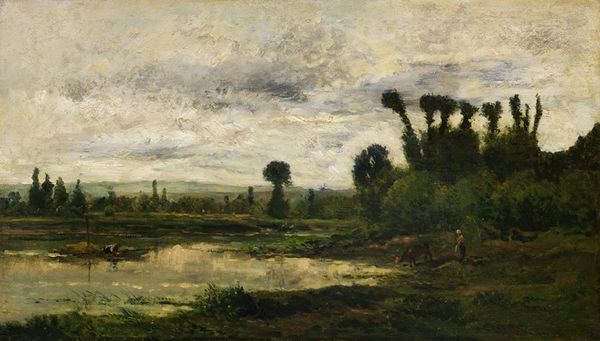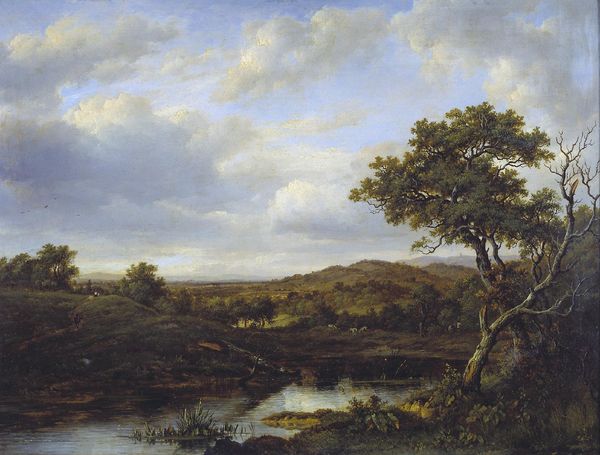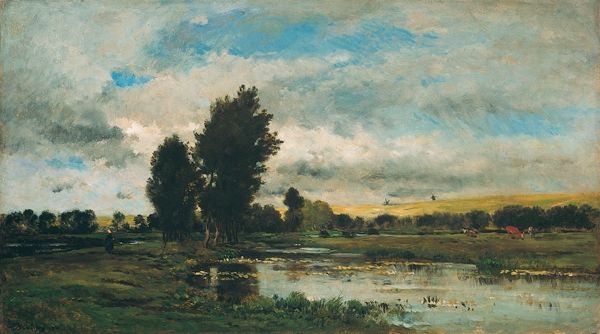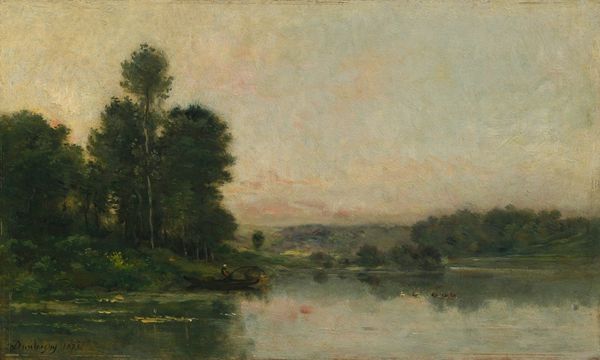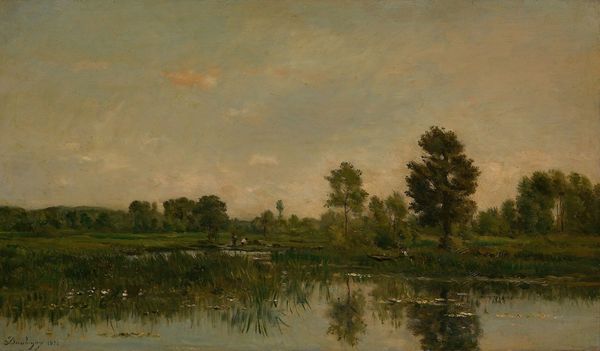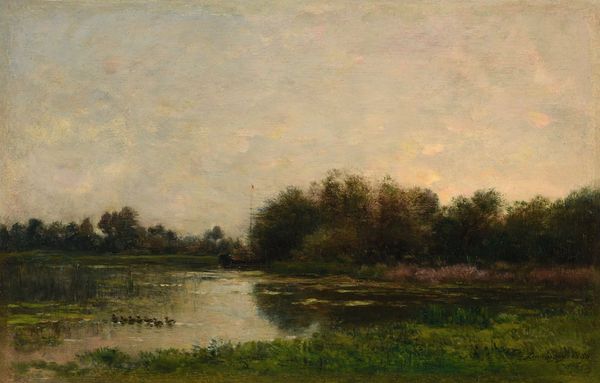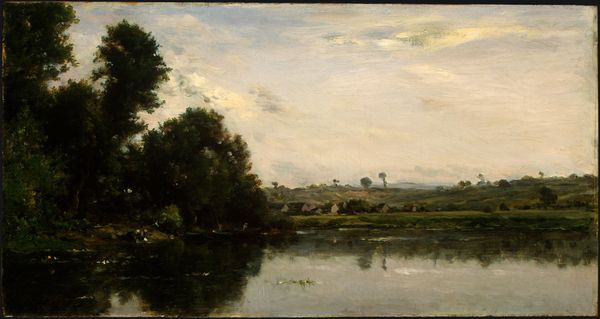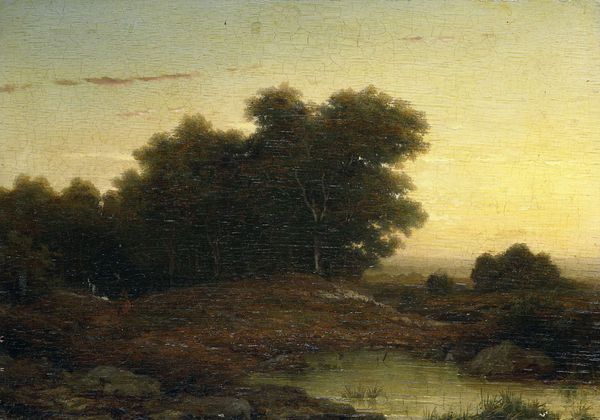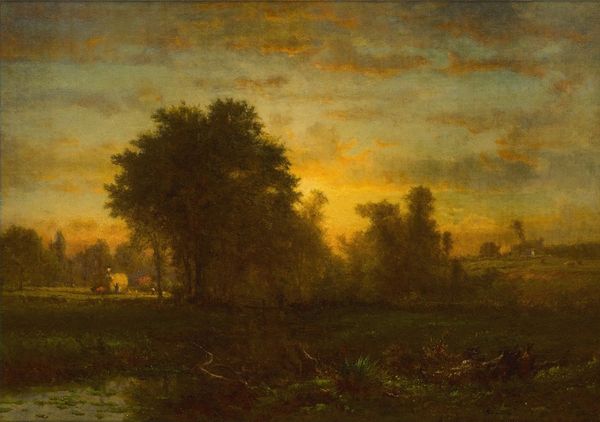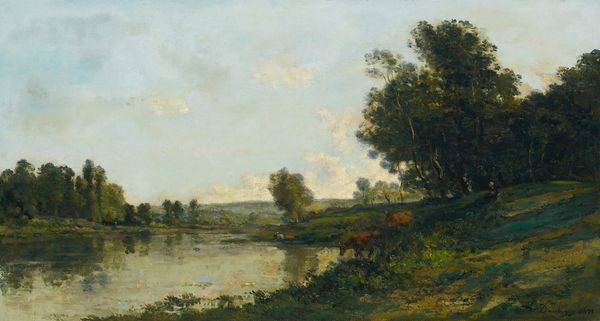
Copyright: Public Domain: Artvee
Curator: The tranquility is almost overwhelming. The hazy light seems to absorb sound, doesn’t it? Editor: It certainly does evoke stillness. This is Étang De Gillieu, Dauphiné; Solitude by Charles-François Daubigny, created in 1876 using oil paints. Daubigny was a key figure in the Barbizon School, known for their dedication to painting en plein air. Curator: Plein air, of course. Which speaks directly to a more radical departure from Academic conventions. I see it as a direct response to the burgeoning urban landscapes of industrializing France. Editor: Precisely. The formal aspects demonstrate Daubigny's unique treatment of light and atmosphere. Notice how the muted color palette and soft brushstrokes create an almost ethereal effect. The composition, divided horizontally into earth, water, and sky, emphasizes the vastness of nature and our smallness in it. Curator: The solitude element, so telling for the era, hints at deeper questions about modern alienation and the desire for unspoiled nature, themes very resonant within evolving gender and class structures. One sees it, of course, not just in French art but echoed in other countries. These quiet landscapes carry an element of political, or proto-political longing. Editor: Perhaps, but look how the receding horizon line guides our eye inward, drawing us into the depths of the scene. The way Daubigny uses tonal values to create depth is masterful, it is all very deliberate and considered, not spontaneous. Curator: Even these techniques must be considered within the context of Realism. Daubigny, like Courbet, aimed to depict the world as it was. A rural peasantry experiencing socio-economic transitions brought on by increasing industrialization. The absence of prominent figures is striking: only the landscape persists. Editor: It’s the simplified forms and the interplay of light and shadow. The composition directs you, almost against your will, back to nature, to a core essence that painting, for Daubigny, seems so deeply linked. Curator: A landscape devoid of people speaks powerfully, perhaps about what’s missing from a new social order, in his and our own era. Editor: Indeed. He provides us a study of not only the beauty, but also a kind of formal reduction that moves painting forward.
Comments
No comments
Be the first to comment and join the conversation on the ultimate creative platform.

